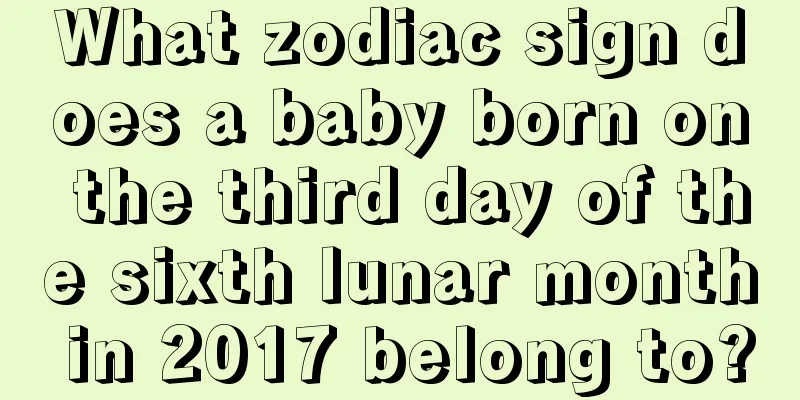What are the methods of choosing a compass?

Introduction: When we come into contact with a compass, it is usually in the hands of a Feng Shui master or as a compass Feng Shui ornament in an old house! For compass enthusiasts, they will choose a compass to study! So what are the methods of choosing a compass? Let’s find out together below! If you want to know more articles and content related to the compass, please quickly enter the other compass-related article topics that Mr. Shui Mo has carefully prepared for you. Everything you want to know is there!Compass SelectionThe compass is an essential tool for Feng Shui masters. In geomancy, Feng Shui is divided into three aspects: "shape, selection, and development". "Shape" refers to the landform, which is the study of the environment. "Selection" refers to choosing an auspicious day and time. "Development" refers to the theory of Qi, such as "Xuan Kong Xue", also called formula science. As long as the geomancer has received the true teachings, he will integrate these three disciplines, and then in practice, he will learn more and gain more experience to benefit the people. Therefore, the compass is the most important tool in geomancy.Generally, people who are new to Feng Shui have a strong interest in it and hope to own a more perfect compass. This section will introduce the various functions, sizes, and materials of the compass. We hope that everyone can choose a compass that suits them. Choosing a compassHere is an explanation of the structure of a regular compass:1. Outer plate: also known as chassis, mostly made of bakelite or ginkgo board 2. Inner plate: also called the surface plate, mostly made of copper or stainless steel 3. Tianchi: Compass 4. Tianxin Ten Dao: the red cross on the dial 5. Number of layers: There are circles with words engraved on the inner plate, one circle is one layer 6. Level: There is a level at the corner of the outer plate to measure balance Compass DescriptionWith the development of modern science and technology, compasses are becoming more and more accurate. Ancient compasses had no outer disk and were mostly round. The outer plate of today's compass is a square. When measuring a wall or tombstone, it must be parallel to the four directions. Then, in conjunction with the inner plate and the cross celestial center, the positions of the yin and yang houses can be measured.The inner disk in the compass can rotate, and its data is engraved on different layers. When the Tianchi magnetic needle of the inner disk is superimposed on the red line, the line position can be measured from the cross line. Tianchi is a magnetic needle. The circled end should point to due north, and the pointed end is due south. Generally, a red straight line is printed on the bottom of the Tianchi of the compass we often use, and two red dots are printed next to one end of the line, which represents due north. Overlap the circled end of the magnetic needle on the center of the two points on the red line, and the area crossed and covered by the Ten Paths of the Center of the Sky is the line position. The Ten Daos of the Center of Heaven are the red cross lines on the outer plate, which divide the inner plate into four areas. The data in these areas is related to the house being measured, and this is also the basis for us to judge good or bad luck. The layers of a compass are circles that record data. Different compasses record different data, and the number of layers often indicates the amount of data, generally ranging from a few layers to more than thirty layers. Miss: The above is the analysis of how to choose a compass. You can refer to this article when choosing a compass! I hope this content is helpful to you! |
<<: Bad luck with money? Three Feng Shui secrets to help you improve your fortune!
>>: Where is the best place to place the fish tank in the home to bring good fortune and wealth?
Recommend
Is 2020 a double Beginning of Spring? Is it a good idea to get married before the Beginning of Spring in 2020?
Introduction: The Beginning of Spring is one of th...
The lunar calendar for the 30th day of the twelfth month of the lunar calendar in 2017, is it a good day?
Although the wind is cold, people's hearts ar...
In which direction are the Gods of Happiness on the 12th day of the 11th lunar month in 2019?
In which direction are the Gods of Happiness on t...
What can’t you do during Cold Dew 2021? What taboos and taboos should we pay attention to during Cold Dew?
The sky is high, hot during the day and cool at ni...
Is the first day of October in the lunar calendar in 2021 an auspicious day? Can we open the business?
If you want the feng shui of your new store to be ...
What date is the second day of the sixth lunar month in 2020? Is it a good day?
June is a hot month and the lotus flowers are in ...
Is it a good time to renovate on July 13th of the lunar calendar in 2019?
There are twelve months in a year, and the first m...
Is March 14th of the lunar calendar in 2022 a good day? Is it auspicious to propose marriage on this day?
The third month of the lunar calendar is also call...
Is it good to be born in the eleventh month of the lunar calendar? How much do you know about the Chinese zodiac sign Rabbit?
The fortunes of different zodiac signs born in the...
What are the taboos on the 27th day of the seventh lunar month in 2018?
The seventh month of the lunar calendar is approa...
What's a good way to say "get married at the beginning of autumn"? Why is it not okay to get married at the beginning of autumn?
The Beginning of Autumn is one of the 24 solar ter...
Detailed explanation of the principles of compass Xuan Kong orientation!
Introduction: People who don’t know about the comp...
Where is the God of Wealth on the 20th day of the sixth lunar month in 2019?
Shui Mo Xiansheng website has carefully compiled ...
What is the fate of those born at 3:00 pm on the Mid-Autumn Festival on the 15th day of the eighth lunar month in 2019?
What is the fate of those born at 3:00 pm on the M...
Is it not appropriate to bury people in the north on the 2021 Little New Year? In which places is the New Year's Eve also the Little New Year?
Introduction: Burial generally requires choosing a...









